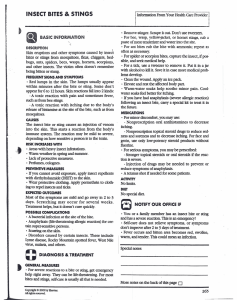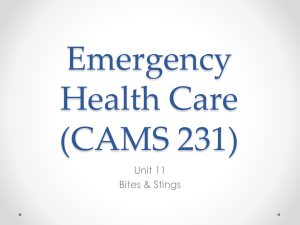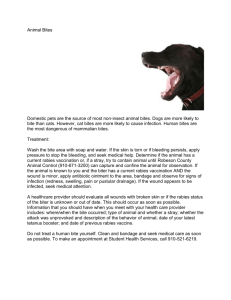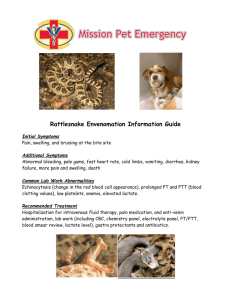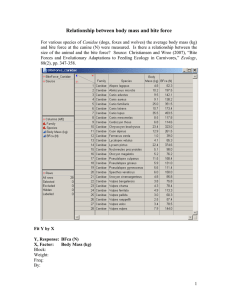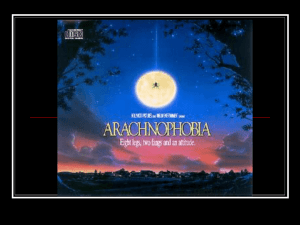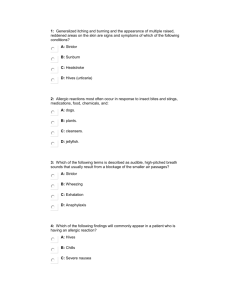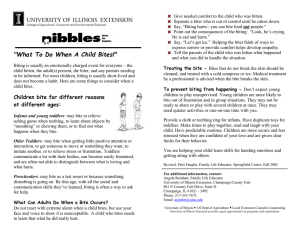INSTRUCTION SHEET: INSECT BITES AND STINGS Abrons Student Health Center
advertisement
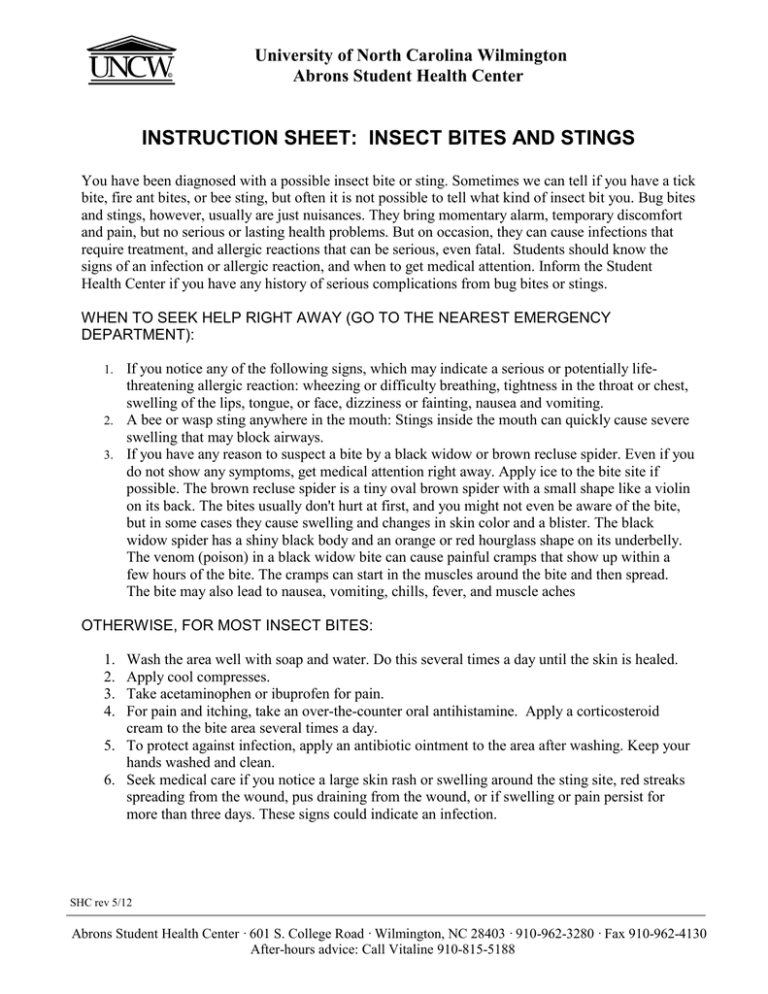
University of North Carolina Wilmington Abrons Student Health Center INSTRUCTION SHEET: INSECT BITES AND STINGS You have been diagnosed with a possible insect bite or sting. Sometimes we can tell if you have a tick bite, fire ant bites, or bee sting, but often it is not possible to tell what kind of insect bit you. Bug bites and stings, however, usually are just nuisances. They bring momentary alarm, temporary discomfort and pain, but no serious or lasting health problems. But on occasion, they can cause infections that require treatment, and allergic reactions that can be serious, even fatal. Students should know the signs of an infection or allergic reaction, and when to get medical attention. Inform the Student Health Center if you have any history of serious complications from bug bites or stings. WHEN TO SEEK HELP RIGHT AWAY (GO TO THE NEAREST EMERGENCY DEPARTMENT): If you notice any of the following signs, which may indicate a serious or potentially lifethreatening allergic reaction: wheezing or difficulty breathing, tightness in the throat or chest, swelling of the lips, tongue, or face, dizziness or fainting, nausea and vomiting. 2. A bee or wasp sting anywhere in the mouth: Stings inside the mouth can quickly cause severe swelling that may block airways. 3. If you have any reason to suspect a bite by a black widow or brown recluse spider. Even if you do not show any symptoms, get medical attention right away. Apply ice to the bite site if possible. The brown recluse spider is a tiny oval brown spider with a small shape like a violin on its back. The bites usually don't hurt at first, and you might not even be aware of the bite, but in some cases they cause swelling and changes in skin color and a blister. The black widow spider has a shiny black body and an orange or red hourglass shape on its underbelly. The venom (poison) in a black widow bite can cause painful cramps that show up within a few hours of the bite. The cramps can start in the muscles around the bite and then spread. The bite may also lead to nausea, vomiting, chills, fever, and muscle aches 1. OTHERWISE, FOR MOST INSECT BITES: 1. 2. 3. 4. Wash the area well with soap and water. Do this several times a day until the skin is healed. Apply cool compresses. Take acetaminophen or ibuprofen for pain. For pain and itching, take an over-the-counter oral antihistamine. Apply a corticosteroid cream to the bite area several times a day. 5. To protect against infection, apply an antibiotic ointment to the area after washing. Keep your hands washed and clean. 6. Seek medical care if you notice a large skin rash or swelling around the sting site, red streaks spreading from the wound, pus draining from the wound, or if swelling or pain persist for more than three days. These signs could indicate an infection. SHC rev 5/12 Abrons Student Health Center · 601 S. College Road · Wilmington, NC 28403 · 910-962-3280 · Fax 910-962-4130 After-hours advice: Call Vitaline 910-815-5188

